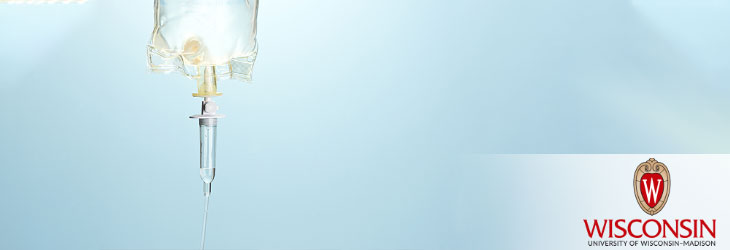Drug Delivery

Method of Forming Mesenchymal Stem Cells from Embryonic Stem Cells
WARF: P04247US
Inventors: John Wesley Pike, Nirupama Pike
The Wisconsin Alumni Research Foundation (WARF) is seeking commercial partners interested in developing a method of directing human embryonic stem cells to form mesenchymal stem cells.
Overview
Mesenchymal stem cells (MSCs) are precursors to mesenchymal tissues, such as bone, dental tissue, cartilage, tendon, bone marrow stroma, hematopoietic lineages, and muscle. Bone marrow is a useful source of MSCs; however, the limited availability of this tissue imposes significant restrictions on the therapeutic use of MSCs. Human embryonic stem cells (ES cells) can potentially provide large numbers of MSCs.
The Invention
UW-Madison researchers have developed a method of directing human embryonic stem cells to form mesenchymal stem cells. These cells can then differentiate into a variety of specific cell types, including bone-forming osteoblast cells.
The protocol includes culturing ES cells under conditions that promote the formation of embryoid bodies. The embryoid bodies are then propagated in a mesenchyme-specific medium and digested to form mesodermal cells, which are further cultured in a mesenchyme-specific medium to form a substantially homogenous population of MSCs. These MSCs can then be propagated with 1,25-vitamin D3 to produce a subpopulation of bone-precursor cells, such as pre-osteoblasts and osteoblasts. Ascorbic acid and beta-glycerophosphate may be added to assist the pre-osteoblasts and osteoblasts in mineralizing matrix tissue to form bone. Alternatively, the embryoid bodies may be cultured directly with 1,25-vitamin D3 to produce a relatively homogenous (greater than 90 percent) population of MSCs.
The protocol includes culturing ES cells under conditions that promote the formation of embryoid bodies. The embryoid bodies are then propagated in a mesenchyme-specific medium and digested to form mesodermal cells, which are further cultured in a mesenchyme-specific medium to form a substantially homogenous population of MSCs. These MSCs can then be propagated with 1,25-vitamin D3 to produce a subpopulation of bone-precursor cells, such as pre-osteoblasts and osteoblasts. Ascorbic acid and beta-glycerophosphate may be added to assist the pre-osteoblasts and osteoblasts in mineralizing matrix tissue to form bone. Alternatively, the embryoid bodies may be cultured directly with 1,25-vitamin D3 to produce a relatively homogenous (greater than 90 percent) population of MSCs.
Applications
- Provides a valuable source of material for medical and dental applications such as promoting new bone growth, enhancing and accelerating fracture healing, facilitating bone transplantation, and securing and consolidating both dental and skeletal prosthetic devices
- Provides a tool for studying mesenchymal tissues in vitro
- Offers a potential method for the targeted delivery of recombinant genes for gene therapy
- Useful to screen for factors or environmental conditions that affect the characteristics of mesenchymal cell types
Key Benefits
- Results in a substantially homogenous (at least 60 to 90 percent) population of MSCs
- Rapid: As few as 23 days are needed to go from human ES cells to bone-forming osteoblasts
Tech Fields
For current licensing status, please contact Andy DeTienne at [javascript protected email address] or 608-960-9857